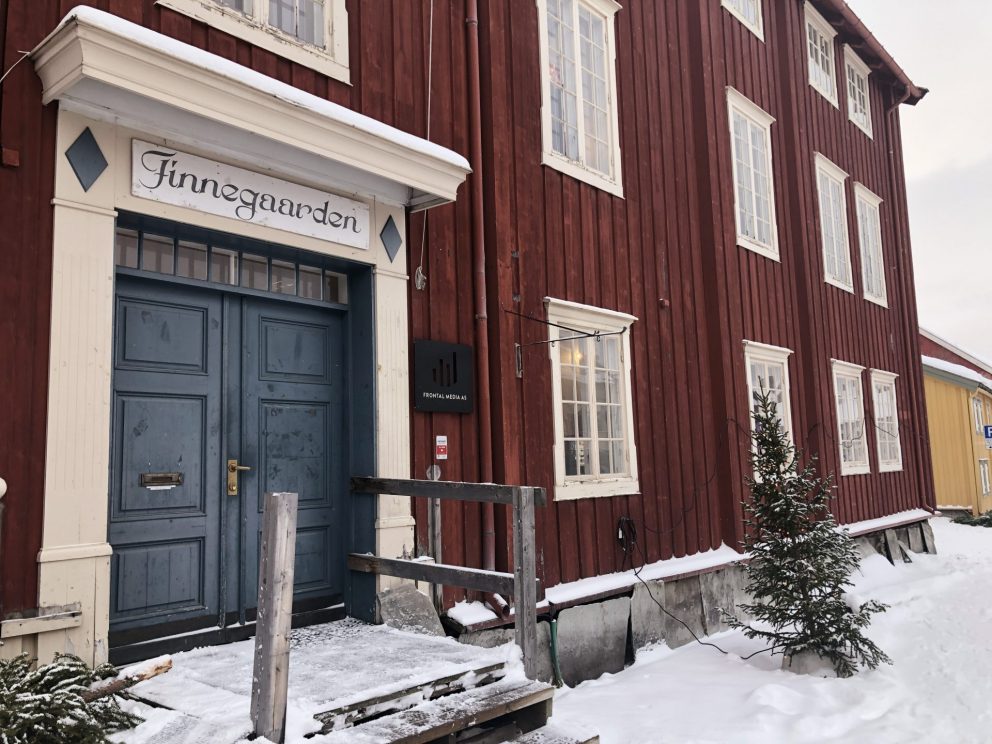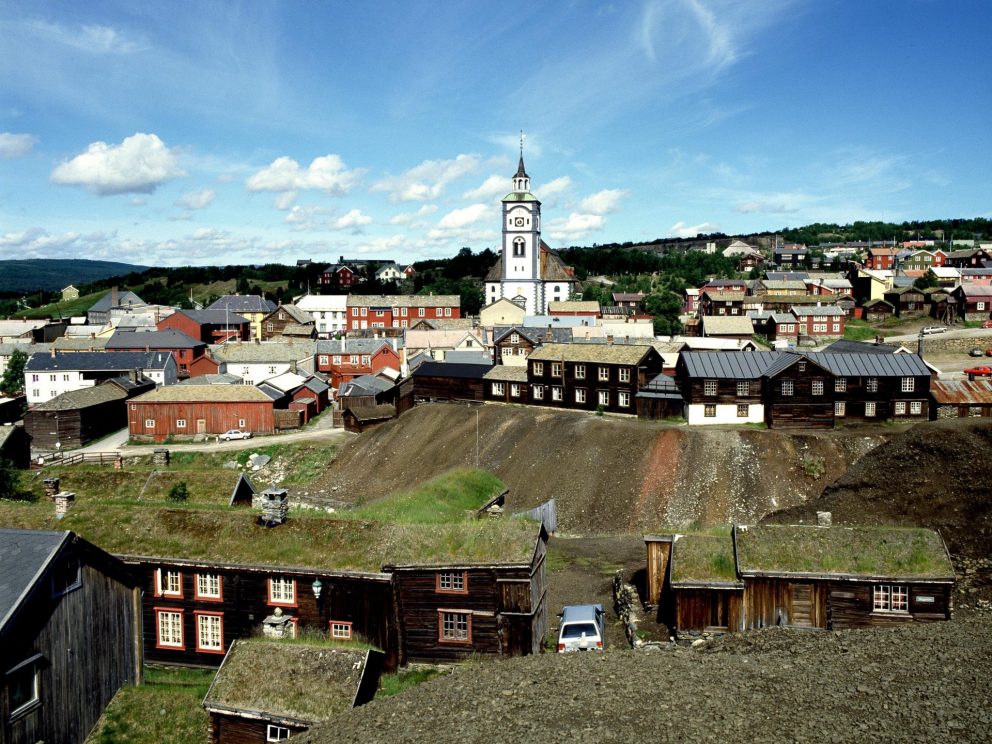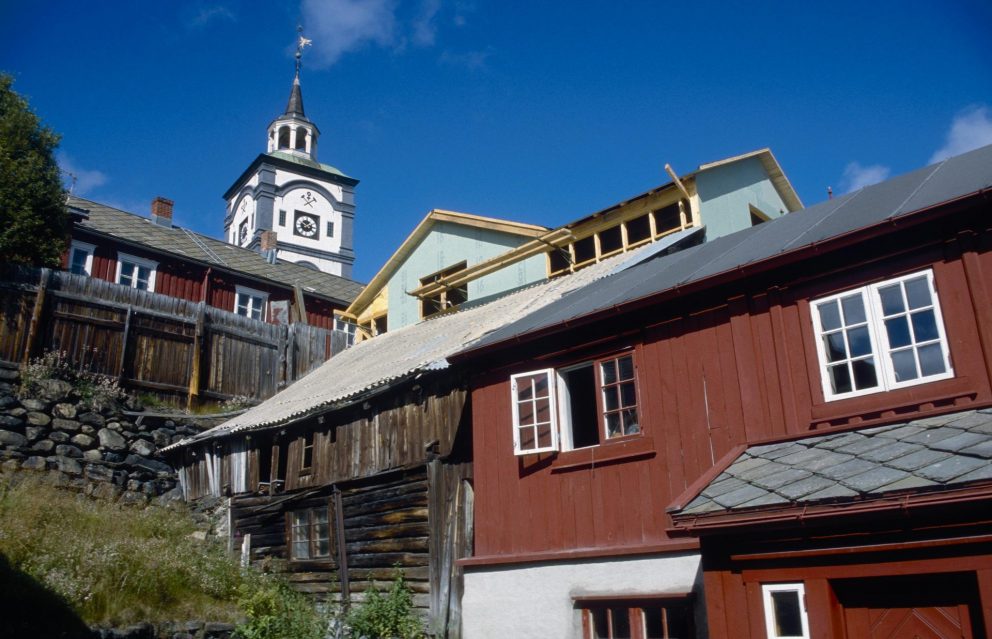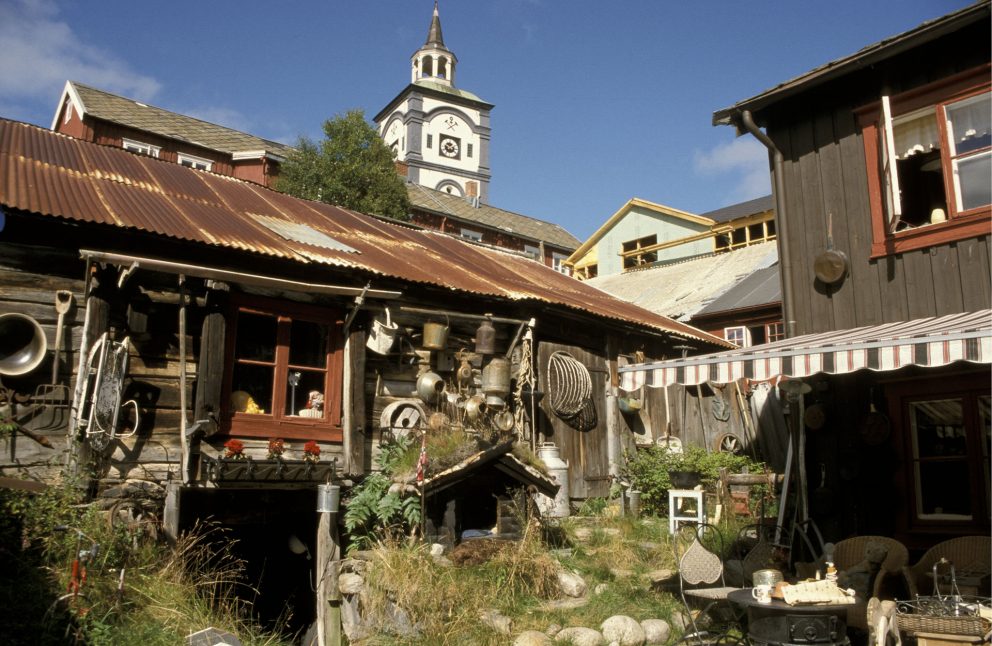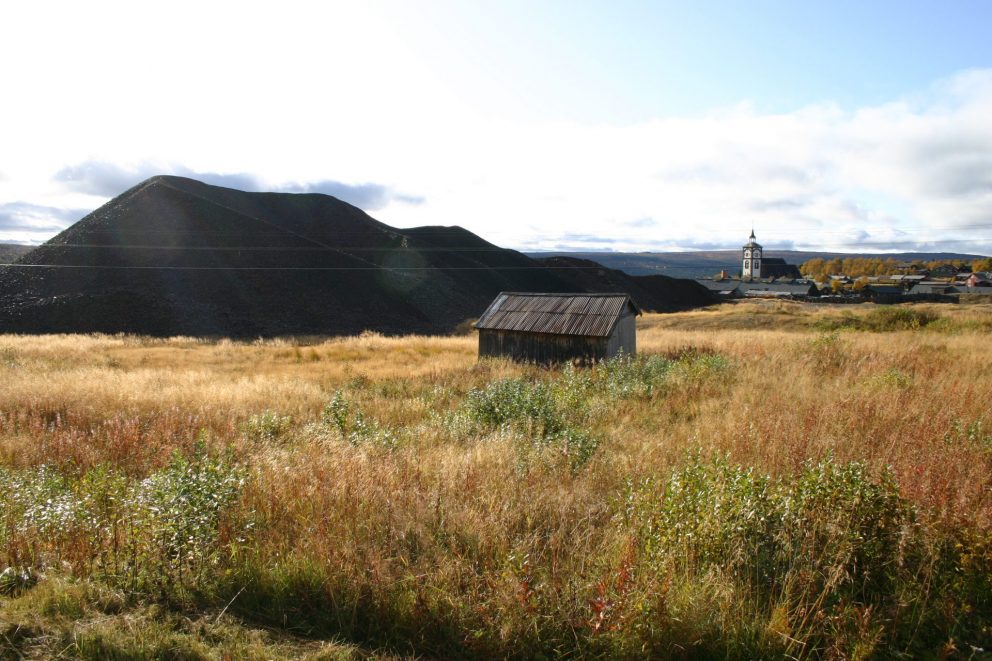World heritage
Røros Mining Town and the Circumference
Røros Mining Town and the Circumference is linked to the copper mines, established in the 17th century and exploited for 333 years until 1977.
The site comprises the Town and its industrial-rural cultural landscapes; Femundshytta, a smelter with its associated area; and the Winter Transport Route. Completely rebuilt after its destruction by Swedish troops in 1679, Røros contains about 2000 wooden one- and two-storey houses and a smelting house.
Many of these buildings have preserved their blackened wooden façades, giving the town a medieval appearance. Surrounded by a buffer zone, coincident with the area of privileges (the Circumference) granted to the mining enterprise by the Danish-Norwegian Crown (1646), the property illustrates the establishment and flourishing of a lasting culture based on copper mining in a remote region with a harsh climate.
Røros was inscribed on the World Heritage List in 1980. The Circumference was inscribed on the World Heritage List in 2010.
Outstanding Universal Value
Brief synthesis
Røros Mining Town and the Circumference consist of three sites within the Circumference, i.e. the area of privileges awarded by the Danish-Norwegian King to Røros Copper Works in 1646.
The town and the cultural landscapes cover a large continuous area which includes the landscape surrounding the mining town, the urban agricultural areas, and the most important mining landscapes where agricultural practices and copper work operations were carried out.
Femundshytta is a largely relict landscape which includes the industrial cultural landscape with the remains of a smelter, water management systems, and the community that grew up around them. The Winter Transport Route is made up of a sequence of lakes, rivers, and creeks in an almost untouched landscape. It was used from November to May.
Røros Mining Town, established in 1646, is unique. It is built entirely of wood, and interlinked with a cultural landscape that shows in an outstanding and almost complete manner how mining operations, transportation, and the way of life had to be adapted to the requirements of the natural environment – the mountain plains, the cold climate, the remote location without roads and with marginal growth conditions for forests and agriculture. On this basis a unique culture developed that has partly disappeared, but an outstanding testimony of the existence of which has been preserved.
Criterion (iii): From the time copper ore was found in the mountains at Røros in 1644 until the copper works went bankrupt in 1977, with German mining technology as a starting point, employing German, Danish, Swedish immigrants, and Norwegian nationals,, a unique culture developed to extract the valuable copper in a remote and sparsely inhabited area. Today there is no mining in the area, but Røros Mining Town and the traces of mining, smelters, transport, and water management systems bear unique witness to the adaptation of technology to the requirements of the natural environment and the remoteness of the situation.
Criterion (iv): Røros townscape and its related industrial and rural landscapes, with their interlinked industrial activity and domestic and agricultural accommodation within an urban environment, illustrate in an outstanding manner how people adapted to the extreme circumstances in which they had to live and how they used the available indigenous resources to provide shelter, produce food for their sustenance, and contribute to the national wealth of the country. Technologically, their buildings and installations evolved through the use of available indigenous materials to functionally satisfy the combined approach of mining and agrarian practices whilst at the same time accommodating the consequences of dealing with extreme climatic conditions.
Criterion (v): Røros Mining Town and the Circumference constitute a totality that is an outstanding example of traditional settlement and land-use. The various activities that have been carried out in the area constitute a coherent and interdependent unit. These activities have shaped a cultural landscape that provides a unique picture of how the mines and the mining town functioned as a complex and at times vulnerable system that verged on the limits of what was possible in an inhospitable environment with a harsh climate.
View photos of Røros Mining Town
Integrity and authenticity
The nominated property contains all elements that convey the Outstanding Universal Value of the property and its most relevant features present a high or good level of integrity. The mining landscape is relict in nature, but almost no transformations or encroachment occurred after the closure of the copper works.
The authenticity of the property is expressed in almost all its aspects and features. All the remains bear credible witness to the history and development of the site. This is also reinforced by the rich archive documenting the copper company’s history.
Protection and management requirements
The most important legislative instruments that help to protect and manage Røros Mining Town and the Circumference are the Cultural Heritage Act (1978) and the Planning and Building Act (1985).
The management framework for Røros Mining Town and the Circumference is embodied in a Statement of Intent which has been signed by all responsible bodies for the nominated property.
The basis for management relies on the existing Norwegian legal framework, the planning instruments in force, the administrative and private bodies responsible for the property and sources of funding for heritage conservation, agricultural activities in heritage areas, productive and marketing activities based on cultural and natural heritage, and sustainable tourism. The management framework contains an action programme including short- and long-term actions.


